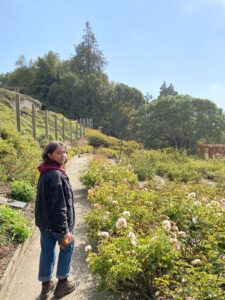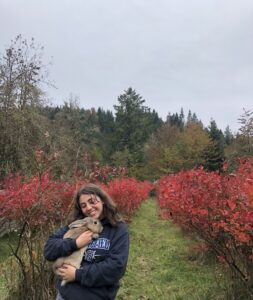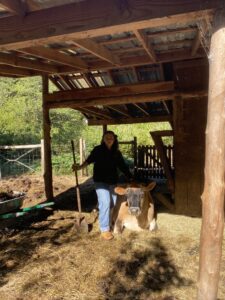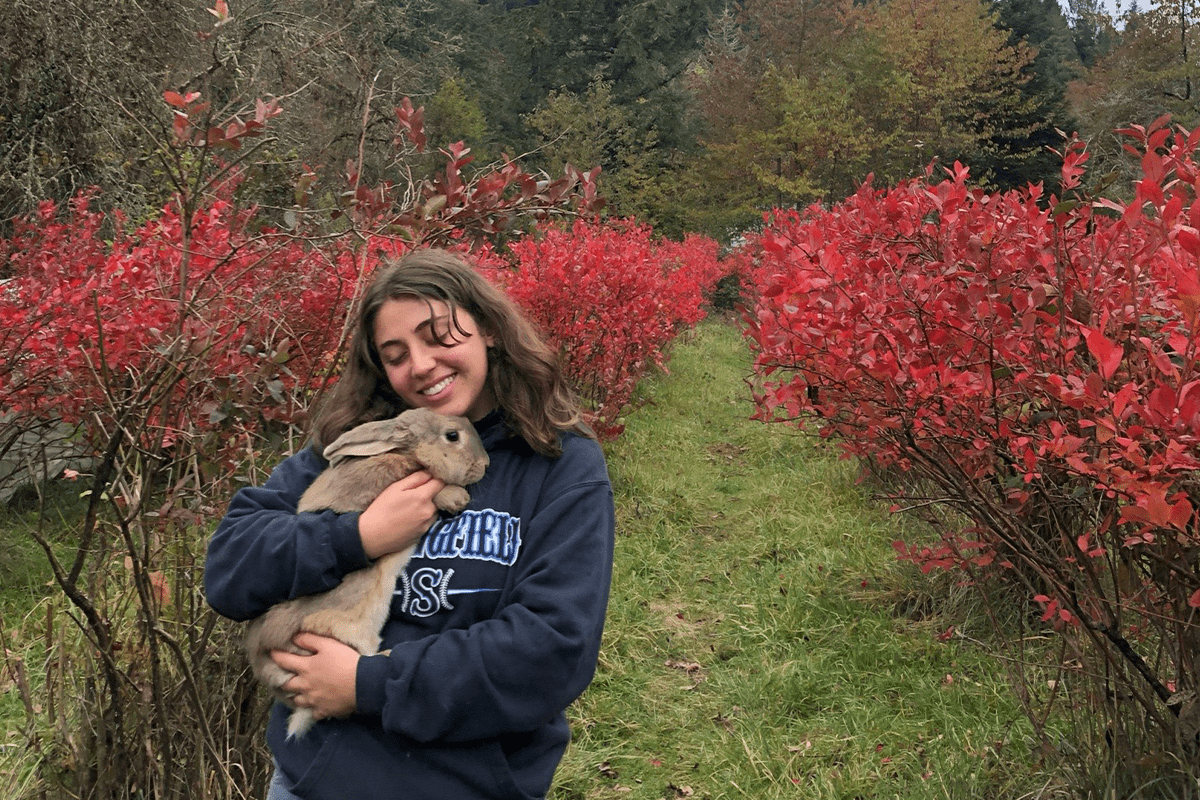— by Brittany Aryn Honig, BSV Classroom Volunteer
When I first stepped foot in the garden at Malcolm X Elementary School I was wearing jeans, a nice shirt, lots of jewelry and my usual zebra print bag. I was greeted by Rivka and the smell of soil. I immediately realized it had been far too long since I had dirt under my nails.
 I started volunteering at the garden as part of a mandatory field placement for an education course I was taking at Cal. I acted quickly when I saw “Berkeley School Gardens” on the list of options because of my experience with farming through the WWOOF (World Wide Opportunities on Organic Farms) program. As an urban studies major, I also have an interest in community gardens and public green space. I come from a long line of public school teachers as well, so the idea of a school garden just about blew my mind. I loved coming to the garden that semester so much that I decided to keep volunteering for another year and a half after the education course was over.
I started volunteering at the garden as part of a mandatory field placement for an education course I was taking at Cal. I acted quickly when I saw “Berkeley School Gardens” on the list of options because of my experience with farming through the WWOOF (World Wide Opportunities on Organic Farms) program. As an urban studies major, I also have an interest in community gardens and public green space. I come from a long line of public school teachers as well, so the idea of a school garden just about blew my mind. I loved coming to the garden that semester so much that I decided to keep volunteering for another year and a half after the education course was over.
On my first day volunteering, Rivka explained the “weedo phenomenon” that is ever-present at Malcolm X. The kids start with a broad kale or collard leaf and fill it with their edible plants of choice. Sour sorrel, Chinese spinach, parsley, fava leaves, chard, wild onions, and borage flowers are some of the most coveted garden fresh treats. They wrap them up and munch on their freshly foraged snack. I couldn’t believe it—these kids were eating raw kale and spinach of their own volition. I didn’t even know what kale was until I was 13!
As I spent more time in the garden, it started to click for me: this garden is a space unlike any other experienced by these elementary-aged kids, unlike any space experienced by most people in their lifetime. A place where eating leaves, touching bugs, and getting dirty is encouraged. I watched as all five senses were activated in these kids the minute they stepped through the grape-vine-draped entrance.
Week after week, I watched kids of all ages eager to help with anything and everything if it meant contributing to the greater good of the garden. Mundane tasks like raking leaves and pulling weeds had kids jumping up and down because it gave them a sense of purpose and responsibility. The trope I had in my head of kids who kick and scream at any mention of chores flew out the window amidst the amaranth and apple tree at Malcolm X.
 Watching the garden transform each season alongside the kids has felt like witnessing magic. The connections kids make to the plants and their growing understanding of where their food comes from is only made possible by this garden curriculum.
Watching the garden transform each season alongside the kids has felt like witnessing magic. The connections kids make to the plants and their growing understanding of where their food comes from is only made possible by this garden curriculum.
One day, while the kids were making their ‘weedos’ at the end of class, one little girl said to me, “I don’t eat plants.” I paused and responded, “Well, you know almost everything you eat comes from plants.” After a second she bent down and grabbed a sour sorrel leaf to try.
A growing awareness of the changing seasons and life cycles are some of the many lessons felt in the garden. At the beginning of each class, Rivka has the kids stretch their arms up to the sky and say “Hi” to the trees and birds, and then down to the worms in the soil. She asks them to look around and notice what the plants look like. Are the plants green or brown? Are the trees full of leaves or barren for the season? What’s the weather like these days?
Every time, I can’t help but think about the grounding effects of doing this simple exercise. These kids are being brought back down to earth while living the rest of their lives in a city, a classroom, and a world that doesn’t prioritize nature, teaching people where their food comes from, or how humans fit into the broader picture of life on earth.
The disconnect expressed by that little girl who told me she doesn’t eat plants is a testament to how urbanization and industrial agriculture has disconnected us both from where our food comes from and the natural world in general. Unfortunately, this basic knowledge and experience is novel these days. Not only are these kids learning essential life cycles, but they are also gaining an awareness of how the earth supports us, and in turn, why we need to support the earth.
 Learning about decomposition and how seeds turn into sprouts from a textbook is a wholly different experience than sticking your hands in the soil or looking at all the worms wiggling around in the compost. This awareness of where canned beans in the grocery store come from, as well as how humans are just one part of a much larger living system, is something I never realized could be taught at such a young age.
Learning about decomposition and how seeds turn into sprouts from a textbook is a wholly different experience than sticking your hands in the soil or looking at all the worms wiggling around in the compost. This awareness of where canned beans in the grocery store come from, as well as how humans are just one part of a much larger living system, is something I never realized could be taught at such a young age.
Although so many of the kids at Malcolm X feel at home in the garden, they know that the garden belongs to the plants, the insects, and the soil. There is a level of respect, humanity and tenderness absorbed by the kids that transcends the garden itself.
These kids are learning invaluable lessons about the environment and their place in a functioning ecosystem, at a time when the climate crisis has reached an all time high. They’re experiencing first-hand the fulfillment that can come from collectively helping to make something grow and thrive, as well as the reciprocity that growing your own food has the power to teach. Even at 23 years old, I feel grateful to continue to learn these lessons from both the garden and the kids themselves.


